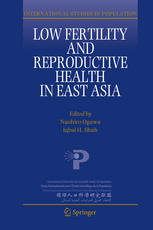

Most ebook files are in PDF format, so you can easily read them using various software such as Foxit Reader or directly on the Google Chrome browser.
Some ebook files are released by publishers in other formats such as .awz, .mobi, .epub, .fb2, etc. You may need to install specific software to read these formats on mobile/PC, such as Calibre.
Please read the tutorial at this link: https://ebookbell.com/faq
We offer FREE conversion to the popular formats you request; however, this may take some time. Therefore, right after payment, please email us, and we will try to provide the service as quickly as possible.
For some exceptional file formats or broken links (if any), please refrain from opening any disputes. Instead, email us first, and we will try to assist within a maximum of 6 hours.
EbookBell Team

4.1
100 reviewsThis book provides a unique blend of social and biomedical sciences in the field of low fertility and reproductive health. It offers a significant contribution to understanding the determinants of low fertility mostly in East Asia, including an assessment of the effectiveness of policies that aim to raise fertility. It introduces new analytical tools and methods and shares application of innovative approaches to analyzing cross-sectional and longitudinal survey data and macro socioeconomic data to shed light on changing mechanisms of low fertility in the context of reproductive health.
The volume introduces the demographic dividend into the study of fertility, analyzes possible impact of population ageing on the amount of resources allocated to child rearing, i.e. the so called "crowding effect" in social care and public spending between the elderly and children. The book also tests the Low Fertility Trap (LFT) hypothesis, a new important theory regarding fertility trends.
The book focuses on East Asia which is numerically large but relatively under-researched with regard to issues covered in various chapters. The relevance of the volume, however, goes beyond countries in East Asia.
The book breaks new grounds and reveals little known facts regarding the influence of endocrine disruptors on male fertility through falling sperm counts, the phenomenon of marital sexlessness and about the sexual behavior of adolescents in East Asia.